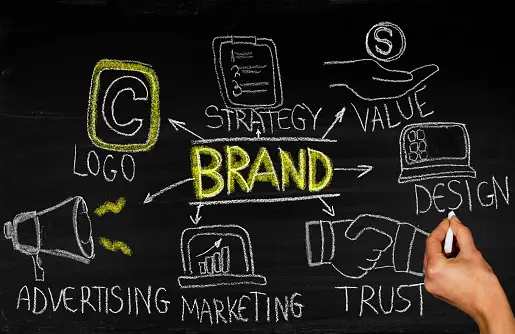It’s becoming harder and harder to stand out in today’s competitive environment. Often times when starting something new, founders choose not to invest in their branding from the get-go. They fall onto Canva or hire an amateur designer to create just a logo. It’s understandable, all expenses add up, and this just doesn’t feel like a priority. However, branding is way more complex than just a logo. It’s the visual identity of your brand. Your brand is the first impression, and in many cases will be the reason a customer pays attention to you or not.
E-commerce & social media sales are extremely saturated at the moment, therefore we’re going to dig deeper into three reasons why investing in a strong brand from the start is crucial. It will set you apart and is worthwhile in the long run.
First and foremost, differentiation. In a crowded market, standing out is key. Your brand identity is used to showcase your brand’s visual identity but also the brand’s personality. Staying authentic to who you are in your digital assets will help you stand out and win new customers.
Second, trust and credibility. Remember your brand is your identity. A strong brand reflects creativity, professionalism, expertise, and reliability that your customers will both need and rely on.
Lastly, scalability and brand value. The more credibility and brand recognition you build, the easier it is to grow organically and this increased your business’s value.
What should your brand identity include?
- Primary logo – The primary logo is the main identifier for the business. It generally contains all core elements of a brand including, full brand name and any taglines or symbols associated with the business. The primary logo is mostly used for website headers, business cards, or places where all parts of the logo are required. It should be crafted to portray a brand’s essence.
- Secondary logo- The secondary logo, also known as a sub-logo, generally uses the elements of the primary logo presented in a different way. This logo variation is generally used in social media, apps, on promotional items, and other places where there are size constraints. It’s also usually the more fun one 🙂
- Submark Logo – Submark logos are often the most versatile. This logo variation is best used where there is limited space such as watermarking images, brand stickers, social media etc. They are also used when a business wants to create a presence for a subset of its offerings while still keeping the core visuals of the main brand.
- Brand Marks- Also known as brand symbols, brand marks are icons or graphic elements that help customers identify a brand. When people see the brand mark, it reminds them of the unique characteristics of your brand. It’s all about emotional connection. When a customer recognizes your brand mark they feel instantly connected.
- Color Palette- Color is one of the most important parts of a brand’s identity. Staying consistent with your color palette creates cohesiveness and recognition in the brand. Additionally, colors evoke human emotions, and can be used to connect with your target market.
- Typography- Your typography sets the tone for your brand. We generally suggest using 2- 3 different fonts in order to break up text and allow the eye to reconnect with the words. Stay loyal to these fonts to avoid brand confusion.
- Brand patterns- Brand patterns are an extra fun part of a brand identity. They play a crucial role in building strong brand recognition. Use them leniently, on anything from your flyers, website, to your Facebook cover image, etc. Patterns are an easy way to express some personality in your brand and help you stand out from your competitors.
- Do’s & don’ts- these are guidelines to help marketing experts that are working with your brand know what to do and what not to do with your branding
Having these elements well-defined will truly help your business stay cohesive in its visual messaging, making you memorable and reliable to your current & potential customers.
This guest blog post was written by Shanie Singer, founder of the full-service creative agency, Munch Designs. Munch specializes in creating visual experiences that leave a lasting impression through branding, web development & design, packaging, print, content creation, social media design, and more. To contact them, reach out to hello@munch-designs.com and visit www.munch-designs.com.



